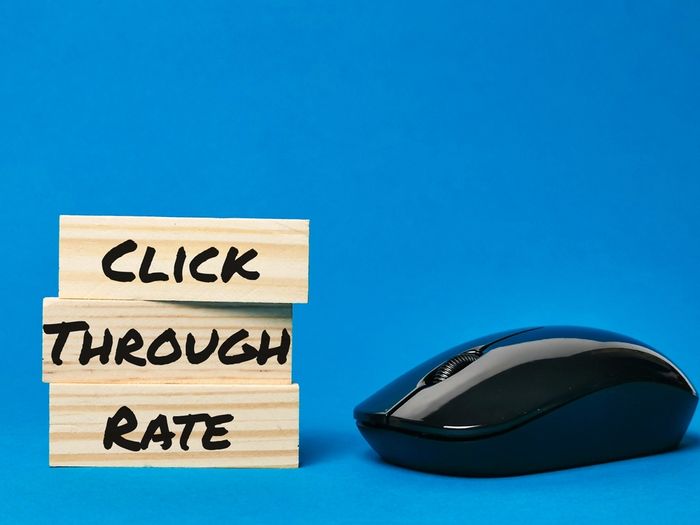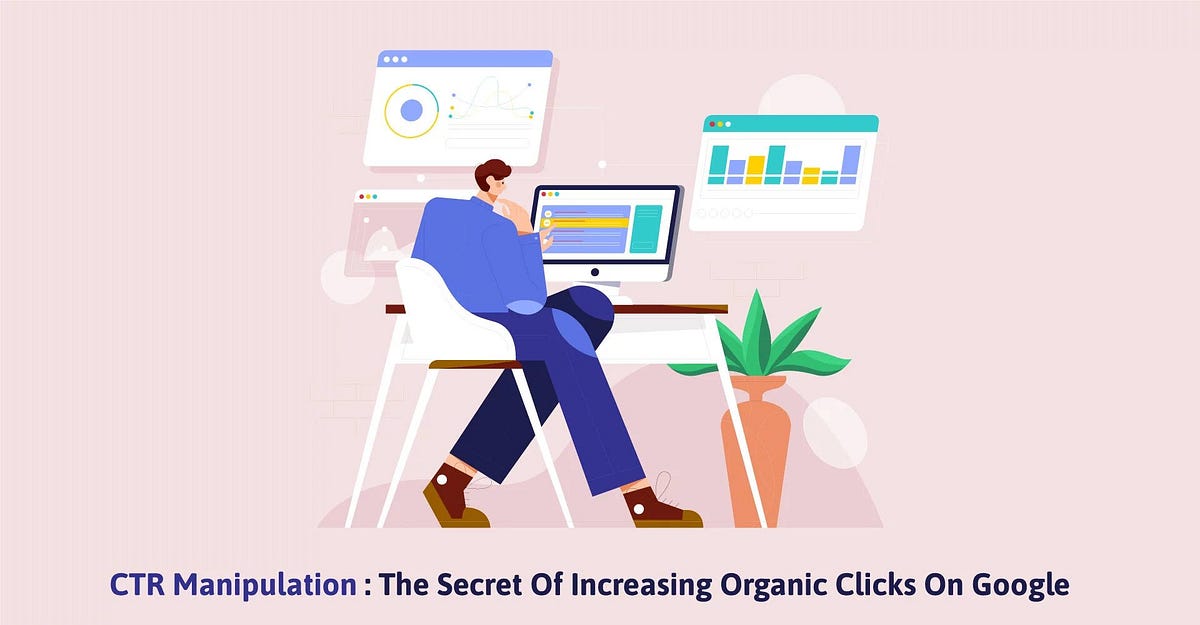Unlock Greater Positions with Efficient CTR Manipulation Methods
Unlock Greater Positions with Efficient CTR Manipulation Methods
Blog Article
Enhancing Organic Click-Through Fees With CTR Adjustment
The optimization of organic click-through prices (CTR) is a nuanced venture that hinges on comprehending both user psychology and efficient material discussion. By leveraging tactical adjustment strategies, such as incredibly crafted headlines and aesthetically interesting components, marketing professionals can dramatically improve user interaction. Nonetheless, the landscape is swarming with mistaken beliefs and oversimplifications regarding what truly drives CTR. As we discover the intricacies of these approaches, it becomes necessary to determine the underlying principles that can bring about continual success in recording target market attention. What truly establishes apart the efficient from the ineffective in this critical facet of electronic marketing?
Recognizing Click-Through Rates
Recognizing click-through prices (CTR) is essential for examining the efficiency of on the internet marketing techniques. CTR gauges the percentage of individuals that click a specific web link or ad contrasted to the complete variety of individuals that view it. A higher CTR indicates that the content is involving and appropriate to the target audience, while a reduced CTR may signify a need for optimization.
To compute CTR, divide the number of clicks by the number of impressions and increase by 100. If an advertisement receives 300 clicks out of 10,000 impressions, the CTR would be 3%. This statistics is vital for examining numerous elements of digital marketing, including search engine optimization (SEARCH ENGINE OPTIMIZATION), email campaigns, and social media sites advertising.
In addition, analyzing CTR helps online marketers identify which methods produce the very best outcomes and which require improvement. By focusing on enhancing CTR, companies can enhance their web content's presence and efficiency, bring about boosted traffic and potential conversions. Understanding the nuances of CTR is fundamental for any kind of marketer intending to maximize their on-line visibility and make the most of roi (ROI)

The Psychology of User Actions
Individual actions is significantly affected by psychological elements that determine exactly how individuals connect with online content. Recognizing these variables is vital for maximizing click-through rates (CTR) in organic search results page. Cognitive prejudices, such as the anchoring result, play a critical role in forming users' understandings. Their preliminary impacts can greatly influence their subsequent judgments concerning significance and integrity. when individuals run into info.
Emotional responses additionally dramatically effect user behavior. Web content that reverberates psychologically can trigger a feeling of seriousness or inquisitiveness, triggering individuals to click. Furthermore, social proof-- such as individual testimonials or scores-- can enhance depend on and encourage engagement, as individuals usually look to the behaviors of others to educate their very own choices.
Furthermore, the concept of shortage can drive clicks - CTR Manipulation Press Release. Limited-time offers or exclusive web content develop a worry of missing out (FOMO), engaging customers to act rapidly. Understanding these emotional chauffeurs enables marketing professionals to create even more compelling web content that resonates with their target audience
Effective CTR Manipulation Methods
Leveraging emotional insights can significantly boost click-through rates (CTR) with targeted adjustment strategies. Among one of the most effective methods is making use of compelling headlines that evoke inquisitiveness or urgency. Phrasing titles as inquiries or incorporating numbers can attract more interest, motivating customers to click.
One why not check here more method entails enhancing meta descriptions to develop a feeling of significance and immediacy. By plainly describing the advantages or remedies offered in the web content, you can engage possible readers and persuade them to click. In addition, using power words-- such as "special," "proven," or "totally free"-- can enhance the charm of your material.
Aesthetic aspects also play an essential duty. Including attractive images or thumbnails can draw users in and boost CTR. A/B testing different visuals can assist determine which images resonate finest with your audience.
Last but not least, making sure that your content guarantees deliverable worth results in higher CTR. When individuals perceive that clicking will offer them with significant understandings or services, they are more probable to engage. By using these techniques attentively, marketing professionals can effectively adjust CTR to their benefit while maintaining honest requirements.
Usual Misconceptions Regarding CTR
Numerous mistaken beliefs border click-through prices (CTR) that can lead marketers to make illinformed decisions. One common misconception is that a greater CTR always equates to far better efficiency. While a high CTR recommends that more customers are clicking, it does not assure conversions or sales. Eventually, the effectiveness of website traffic relies on the quality of the landing page and the relevance of the content.
An additional typical belief is that CTR is an isolated metric. In reality, CTR should be evaluated together with various other performance indications, such as bounce price and conversion price, to obtain an alternative sight of project success.
Additionally, some online marketers weblink think that maximizing for CTR alone is sufficient. Nonetheless, focusing solely on CTR can lead to clickbait tactics that may draw in clicks however stop working to engage individuals meaningfully. This approach can damage brand name track record and cause lower retention prices
Finally, there is a notion that CTR approaches are globally efficient. The fact is that optimal CTR methods can differ significantly throughout industries and target market, demanding tailored techniques for various market segments. Comprehending these misconceptions is important for developing reliable CTR techniques that align with overarching marketing goals.
Determining CTR Success
Although high click-through prices (CTR) can suggest effective interaction with material, gauging their real success needs an extensive analysis of numerous factors. Initially, it is important to recognize the context in which the CTR is attained. As an example, a high CTR on a misleading title might not convert to significant engagement or conversions, inevitably reflecting improperly on the brand's reputation.
Second, reviewing the source of website traffic is important. Organic website traffic from internet search engine can indicate a robust web content strategy, while clicks from irrelevant sources might show an absence of targeting. Additionally, measuring the subsequent customer actions is essential; examining metrics Recommended Site such as bounce price, time spent on page, and conversion rates can give much deeper insights right into the quality of the engagement launched by the CTR.

Conclusion

The optimization of organic click-through rates (CTR) is a nuanced endeavor that pivots on comprehending both individual psychology and reliable web content discussion. CTR gauges the percent of customers who click on a specific web link or ad contrasted to the overall number of customers that see it. A higher CTR indicates that the material is engaging and pertinent to the target audience, while a lower CTR might indicate a demand for optimization.
Focusing specifically on CTR can lead to clickbait techniques that may bring in clicks yet stop working to involve users meaningfully. Additionally, determining the subsequent individual behavior is essential; evaluating metrics such as bounce price, time spent on web page, and conversion prices can supply deeper insights right into the top quality of the involvement started by the CTR.
Report this page